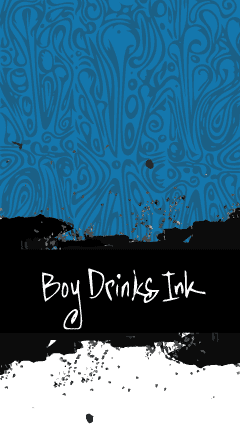
Kendrick Lamar
untitled unmastered.
Album Release Date: March 4th, 2016
Top Dawg Entertainment/Aftermath Entertainment/Interscope Records 2016
Kendrick Lamar's untitled unmastered. was released with next to no notice or promotion, as a collection of outtake tracks recorded during the To Pimp a Butterfly sessions throughout the preceding year or two. It's been said that Kendrick consciously avoided listening to any music other than that which he was recording while making that album, as if in a sealed bubble unsusceptible to any outside influences. As a result, To Pimp a Butterfly is something thoroughly unique, in mostly positive if also sometimes perplexing ways. Hailed by many as a masterpiece, it left others scratching their heads. And the surprise release untitled unmastered. continues what that previous album established.
The tracks are indeed simply labeled "untitled" 01 through 08. Officially released as a compilation album, it nonetheless could be considered a complete studio album in its own right, albeit one that clearly plays as a counterpart to To Pimp a Butterfly. The production is reminiscent of Butterfly with largely free-form jazz samples, often changing up tempo and/or beats various times throughout any given track. The songs usually have long, drawn-out fade-ins and fade-outs, spoken word intros and outros, and sometimes lack clear demarcation between chorus and verse. And so the album bucks conventional HipHop and pop song structures, sustaining the avant-garde brand that Kendrick showed hints of on his breakthrough album good kid, m.A.A.d city (2012), and expanded on Butterfly. But just when you might think it's maybe a bit too eccentric for your tastes, Kendrick brings it back to more orthodox HipHop stylings with tracks like the groovin' "untitled 03" featuring neo-soul singer Bilal, and R&B-tinged "untitled 06" featuring Cee-Lo Green.
Because of the abstract, multilayered qualities, Kendrick songs tends to grow on me, such as "untitled 07" which has come to be my album favourite after initially passing largely unnoticed. It consists primarily of a series of repeated phrases: "Love won't get you high as this / Drugs won't get you high as this / Fame won't get you high as this", and on and on with a list of things both material and intangible that "won't get you high as this", before the refrain of "Levitate, levitate, levitate". What the "this" is that presumably will get you high is never explicitly stated, maybe referring to the song itself, or creative expression in general. With a measure of ambiguity and satirical resonance, the song leads us to contemplate its meaning while enjoying its mad bass and ill flow. "untitled 08" concludes the album as a somewhat more traditional rap song, with a funky soul groove to which Kendrick raps a chorus of "Why so sad? / Walking around with them blue faces / She said I'm down on my luck / And it's something I gotta have / Blue faces". It all bears for repeated listens as music that's not easily qualifiable.
Kendrick's all the rage these days, emerging in the last few years to become one of the new giants of HipHop. Many proclaim him to be the best rapper of his generation. A vast range of music artists have given him props, from rap superstars like Eminem to more alternative HipHop acts like Slug (from Atmosphere) and Saul Williams, to pop icons like Prince. Kendrick's broad appeal to both the indie and mainstream music communities is unparalleled in the history of HipHop. Even my fiftysomething baby boomer friend (a former rock and country music DJ and longtime record collector) bought To Pimp a Butterfly after seeing Kendrick's performance on 2016's Grammy Awards show. He said it was the first HipHop album he's ever purchased.
Following Kendrick's initial success, it's somewhat curious that he hasn't gone down the path that many recording artists do, of treading into more pop-oriented territory with each successive album. It's a trend that happens all too often, of artists releasing more inventive work earlier in their careers before transforming their sound into a slicker, more commercially viable package with subsequent releases. But Kendrick has in fact done the opposite—made even less accessible and more abstract albums with To Pimp a Butterfly and untitled unmastered. What's refreshing is that rather than alienating early fans with this experimental direction he's maintained, Kendrick's popularity has continued to soar. As the flagship artist of independent record label Top Dawg Entertainment, Kendrick Lamar might just well be the world's first mainstream alternative rapper—achieving a degree of commercial success that few independent recording artists do.
Multiple ingredients contribute to Kendrick's crossover appeal; his complex style of rap delivery displays a keen intellect and strong emotion juxtaposed with gritty street content, socially-relevant messages, and popular HipHop themes. He's from Compton; the same largely black, impoverished Los Angeles-area city that birthed gangsta rap legends Ice Cube, Eazy-E, and Dr. Dre. And even though Kendrick's music embodies many aspects of that same American innercity ethos, it's not gangsta rap. His creative production veers towards excessive eccentricity at times, but passionate engagement on pretty well every track and lyrics laced with common HipHop tropes keep it all just accessible enough for mainstream listeners. And that's combined with a hunger and ridiculous work ethic that sees him featured countless times on a diverse range of artists' albums: George Clinton, Talib Kweli, Taylor Swift, Imagine Dragons, and on and on. These guest appearances have no doubt expanded Kendrick's audience, contributed to his popularity, and given him a rare level of creative freedom on his own projects.
As a result, I'm impressed and somewhat mystified by Kendrick's career trajectory. As much as his music is definitively HipHop, it also challenges the boundaries of the genre. Such is the enigmatic and compelling nature of Kendrick Lamar.
• Nik Dobrinsky / Boy Drinks Ink
April 28th, 2016


